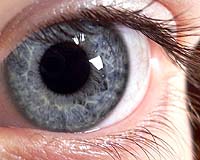 |
Lausanne, Switzerland (SPX) May 27, 2010 EPFL Laboratory of Multiscale Modeling of Materials, in Switzerland, has developed a flowing 3D model of the cardiovascular system that should allow for predictions of certain heart diseases before they become dangerous. The supercomputer Cadmos, installed at the Ecole Polytechnique Federale de Lausanne (EPFL) in August of 2009, has bared one of its first fruits: the Laboratory of Multiscale Modeling of Materials has recently developed a computer program the accurately models the complex system of blood flow in the heart for individuals at an unheard-of precision of ten millionths of a meter or ten microns. These individual-specific models-which take up to six hours using a supercomputer-will allow for a detailed study of the cardiovascular system and lead to early predictions of heart conditions such as arteriosclerosis, or the hardening of arteries that often leads to heart attacks. Plans are in the works to develop the program for individual PCs for clinical applications within the next two to three years. "When studying the blood flow in arteries, one has to take into account a vast number of different fluid interactions that happen on different time scales and of different sizes," explains Simone Melchionna, who heads the project. Based on a detailed heart scan, the simulation juggles over a billion different variables in order to represent a fluid containing ten-million red blood cells. Using another supercomputer based in Juelich (Germany), the research team has achieved even greater precision with their program that allows for the visualization of the interaction of plasma, red blood cells and even micro-particles. "We can evaluate all of the elements and how they interact with each other; move, stagnate and whirl and turn over each other," Melchionna adds. This precision will allow for the detection of the first signs of arteriosclerosis when the plaques begin to form on the artery's walls and disturb blood flow. This condition, which creates dangerous rigidity and blockage of these vital vessels, is the main cause of heart attacks-responsible for 12% of deaths in the world. This mortality rate increases to 16% in richer countries, where greasy and cholesterol rich foods are more common. Early detection of the forces leading to arteriosclerosis is one element in the strategy developed by EPFL and the universities of Geneva and Lausanne to rationalize the investment in a supercomputer of 16,000 microprocessors-the equivalent of 8,000 PCs.
Share This Article With Planet Earth
Related Links EPFL Laboratory of Multiscale Modeling of Materials Hospital and Medical News at InternDaily.com
 Toward Simplifying Treatment Of A Serious Eye Infection
Toward Simplifying Treatment Of A Serious Eye InfectionWashington DC (SPX) May 20, 2010 Scientists are reporting development of a potential new way of enabling patients with bacterial keratitis to stick with the extraordinarily intensive treatment needed for this potentially blinding eye infection. The disease affects more than 500,000 people each year worldwide, including 30,000 people in the United States. The study is in ACS' Molecular Pharmaceutics, a bi-monthly journal. ... read more |
|
| The content herein, unless otherwise known to be public domain, are Copyright 1995-2010 - SpaceDaily. AFP and UPI Wire Stories are copyright Agence France-Presse and United Press International. ESA Portal Reports are copyright European Space Agency. All NASA sourced material is public domain. Additional copyrights may apply in whole or part to other bona fide parties. Advertising does not imply endorsement,agreement or approval of any opinions, statements or information provided by SpaceDaily on any Web page published or hosted by SpaceDaily. Privacy Statement |